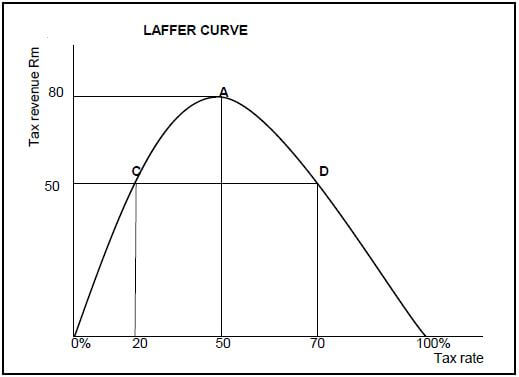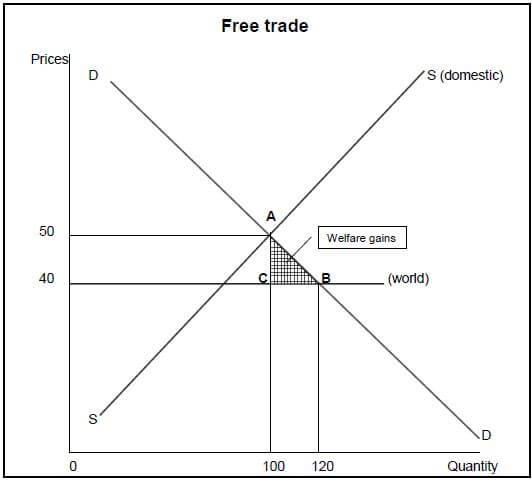ECONOMICS GRADE 12 PAPER 1 QUESTIONS - NSC PAST PAPERS AND MEMOS SEPTEMBER 2017
Share via Whatsapp Join our WhatsApp Group Join our Telegram GroupECONOMICS
GRADE 12
PAPER 1
NSC PAST PAPERS AND MEMOS
SEPTEMBER 2017
INSTRUCTIONS AND INFORMATION
- Answer FOUR questions as follows in the ANSWER BOOK:
- SECTION A: COMPULSORY
- SECTION B: Answer TWO of the three questions.
- SECTION C: Answer ONE of the two questions.
- Number the answers correctly according to the numbering system used in this question paper.
- Write the number of the question above each answer.
- Read the questions carefully and start each question on a NEW page.
- Leave 2–3 lines between subsections of questions.
- Answer the questions in full sentences and ensure that the format, content and context of your responses comply with the cognitive requirements of the questions.
- Answer only the required number of questions. Answers in excess of the required number will NOT be marked.
- Use only black or blue ink.
- Non-programmable pocket calculators may be used.
- Write neatly and legibly.
QUESTIONS
SECTION A (COMPULSORY)
QUESTION 1 30 MARKS – 20 MINUTES
1.1 Various options are provided as possible answers to the following questions. Choose the correct answer and write only the letter (A–C) next to the question number (1.1.1–1.1.8) in the ANSWER BOOK, for example 1.1.9 A.
1.1.1 Money withdrawn from the circular flow is called ...
- money flow.
- injections.
- leakages.
- deposits.
1.1.2 Aggregate supply can be stimulated through a government policy of …
- lowering the productivity of the factors of production.
- reducing production cost.
- limiting the efficiency of inputs.
- limit the efficiency of markets.
1.1.3 A reason for the existence of a public sector is to …
- provide merit goods.
- determine the prices of consumer goods.
- provide private goods
- leave the management of the economy to the private sector.
1.1.4 An official ban on trade or other activities with a particular country is known as …
- sanctions.
- disinvestment.
- withdrawal.
- an embargo.
1.1.5 An argument in favour of the protection of local industries is …
- the prevention of dumping.
- few jobs opportunities are created.
- unstable wage levels are experienced.
- less revenue to government.
1.1.6 Taxes used to finance development expenditure, to benefit the poor is called ...
- cash benefits.
- progressive personal income.
- benefits in kind.
- wealth.
1.1.7 The key rate of interest in South Africa is the …
- exchange rate.
- zero rate.
- repo rate.
- inflation rate.
1.1.8 With globalisation countries become economically more …
- isolated.
- interdependent.
- independent.
- ineffective. (8 x 2) (16)
1.2 Choose a description from COLUMN B that matches an item in COLUMN A. Write only the letter (A–I) next to the question number (1.2.1–1.2.8) in the ANSWER BOOK, for example 1.2.9 K.
| COLUMN A | COLUMN B |
1.2.1 GNP |
|
(8 x 1) (8)
1.3 Identify the concept described in each of the following statements. Write only the term next to the question number (1.3.1–1.3.6) in the ANSWER BOOK.
1.3.1 Value of all spending by household on goods and services
1.3.2 Factors that originate outside the market system.
1.3.3 The rate at which a currency can be exchanged for another
1.3.4 The track of land that forms a passageway allowing access from one area to another
1.3.5 A deliberate decrease in the value of a country’s currency
1.3.6 The policy implemented in 1994 in S.A to redress the inequality of the past. (6 x 1) (6)
TOTAL SECTION A: 30
SECTION B
Answer TWO of the three questions from this section in the ANSWER BOOK.
QUESTION 2: MACROECONOMICS 40 MARKS – 30 MINUTES 2.1
Answer the following questions:
2.1.1 Name the TWO periods in a business cycle. (2 x 1) (2)
2.1.2 What is the impact of the multiplier, if the equilibrium income increases by more than the increase in initial expenditure? (1 x 2) (2)
2.2 Study the table below and answer the questions that follow.
Year | Nominal GDP (R billion) | Real GDP (R billion) |
2015 | 4 049 759 | 3 008 436 |
2016 | 4 336 988 | 3 009 860 |
[Source: Quarterly Bulletin, March 2017]
2.2.1 Which source was used to compile the data in the above table? (1)
2.2.2 Which year is currently used as the base year by the Reserve Bank? (1)
2.2.3 Briefly explain the difference between nominal GDP and real GDP. (2 x 2) (4)
2.2.4 Calculate the deflator for 2016. Show all your calculations. (4)
2.3 Study the graph below and answer the questions that follow. 
2.3.1 At which point will the government maximise revenue? (1)
2.3.2 What curve is depicted above? (1)
2.3.3 What effect will point C have on government revenue? (2)
2.3.4 What are the dangers of high personal income tax rates? (2)
2.3.5 How can the South African government avoid public-sector failure? (2 x 2) (4)
2.4 Briefly explain how a deficit on a balance of payment will automatically be corrected under a free floating exchange rate system. (4 x 2) (8)
2.5 How does the entry of domestic businesses into foreign markets benefit South Africa? (4 x 2) (8) \
[40]
QUESTION 3: MACROECONOMICS 40 MARKS – 30 MINUTES
3.1 Answer the following questions.
3.1.1 Name TWO instruments that the SARB can use to influence the economy. (2 x 1) (2)
3.1.2 What effects will a huge increase in electricity costs have on smaller businesses in South Africa? (1 x 2) (2)
3.2 Study the following extract below and answer the questions that follow.
INDUSTRIAL POLICY ACTION PLAN (IPAP) The latest developments with regard to Industrial development is to secure integrated intra-governmental support for industrialisation in close corporation with the private sector. The focus will be on education and skills, infrastructure and the regulatory environment, the labour relations environment and inclusive growth. [Source: www.thedti.gov.za] |
3.2.1 What does the abbreviation IPAP stand for? (1)
3.2.2 Name ONE focus area of this policy for 2017/18. (1)
3.2.3 Explain ONE reason for industrial development. (2)
3.2.4 How successful is industrial development policies in South Africa? (2)
3.2.5 What impact might IPAP have on industrial development in the private sector of South Africa? (2 x 2) (4)
3.3 Study the table below and answer the questions that follow.
| HUMAN DEVELOPMENT INDEX | |
Country | HDI values |
Nigeria | 0,304 |
South Africa | 0,629 |
Norway | 0,955 |
[Source: http: Wikipedia.Org.,January 2014]
3.3.1 Name the method used to measure the economic development of a country. (1)
3.3.2 Which country has the highest HDI according to the table above? (1)
3.3.3 Explain the term human development. (2)
3.3.4 Why is South Africa’s economic development under performing? (2)
3.3.5 How can the South African government help to improve economic development? (2 x 2) (4)
3.4 Compare the standard of living between the North-South countries. (2 x 4) (8)
3.5 How successful is Black Economic Empowerment in the South African economy? (8)
[40]
QUESTION 4: MACROECONOMICS AND ECONOMIC PURSUITS 40 MARKS – 30 MINUTES
4.1 Answer the following questions.
4.1.1 List TWO problems of public sector provisioning. (2 x 1) (2)
4.1.2 How does economic growth relate to economic development? (1 x 2) (2)
4.2 Study the graph below and answer the questions that follow. 
4.2.1 What international trade policy is reflected in the graph above? (1)
4.2.2 What happens to the supply when the country engages in free trade? (1)
4.2.3 Describe the term free trade. (2)
4.2.4 Explain why trade protocols are necessary for the economy. (2)
4.2.5 How does the society experience an increase in welfare through free trade? (2 x 2) (4)
4.3 Study the extract below and answer the questions that follow. 
4.3.1 What economic problem is illustrated in the picture above? (1)
4.3.2 How might inflation affect the consumer’s buying power? (1)
4.3.3 Briefly describe the term inflation. (2)
4.3.4 How would an investor be influenced by inflation? (2)
4.3.5 Why is important for the South African government to monitor the performance of the economy? (2 x 2) (4)
4.4 Briefly explain the critical infrastructure and skill support programme as the incentives used by S.A. government, to improve industrial development. (2 x 4) (8)
4.5 How can climate changes influence international trade? (8)
[40]
TOTAL SECTION B: 80
SECTION C
Answer ONE of the two questions from this section in the ANSWER BOOK.
STRUCTURE OF ESSAY | MARK ALLOCATION |
Introduction
| Max. 2 |
Body
| Max. 26 Max. 10 |
Conclusion
| Max. 2 |
TOTAL NUMBER OF MARKS | 40 |
QUESTION 5: MACROECONOMICS 40 MARKS – 40 MINUTES
The business cycle plays a key role in enabling economists to make educated guesses about the future growth of the economy.
- Discuss indicators as features underpinning forecasting business cycles. (26 marks)
- Why is it important that the Reserve Bank maintains price stability in the South African economy? (10 marks)
[40]
QUESTION 6: ECONOMIC PURSUITS 40 MARKS – 40 MINUTES
Many people are interested in the performance of an economy, such as ordinary citizens, businesses, investors and the government
- Discuss the following social indicators:
- Nutrition and health (16 marks)
- Demographics (10 marks) (26 marks)
- How can economic development be improved through the use of these social indicators? (10 marks)
[40]
TOTAL SECTION C: 40
GRAND TOTAL: 150